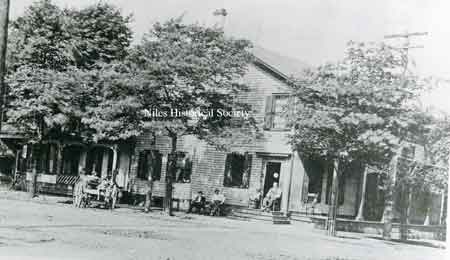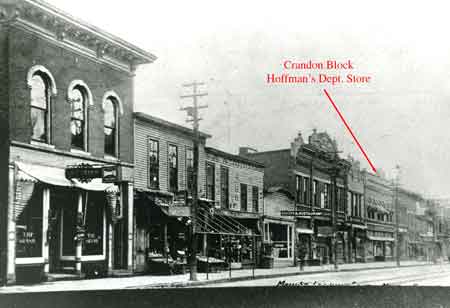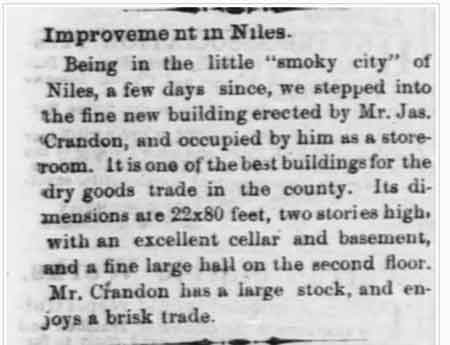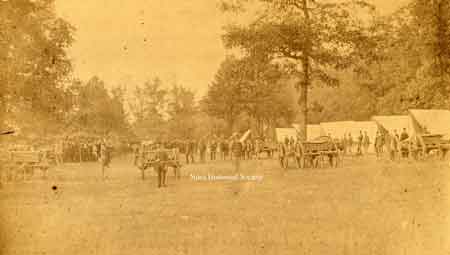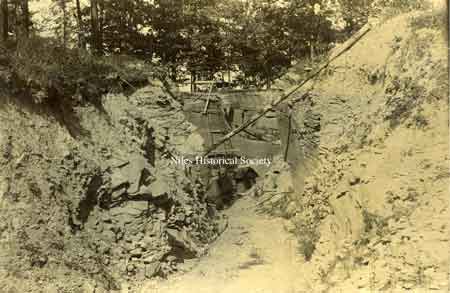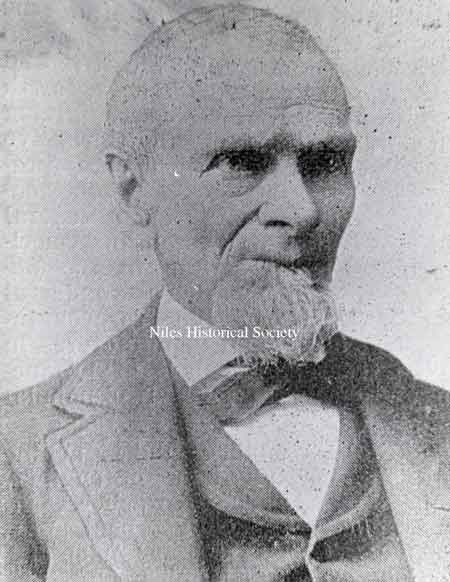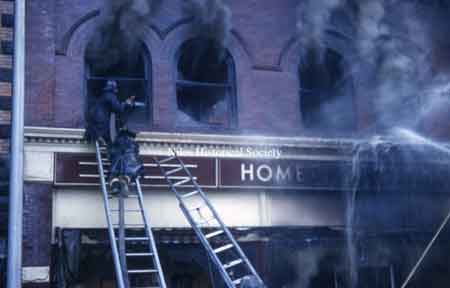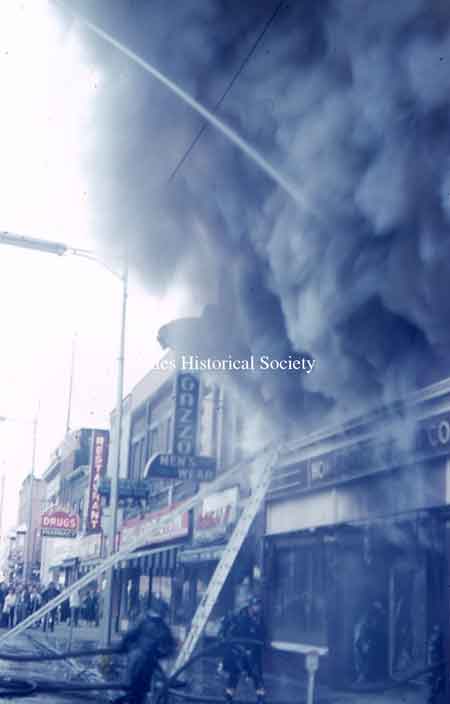Ward-Thomas Museum


James Crandon
Ward — Thomas
Museum
Home of the Niles Historical Society
503 Brown Street Niles, Ohio 44446
Click on any photograph to view a larger image.
News
Tours
Individual Membership: $20.00
Family Membership: $30.00
Patron Membership: $50.00
Business Membership: $100.00
Lifetime Membership: $500.00
Corporate Membership:
Call 330.544.2143
Do you love the history of Niles, Ohio and want to preserve that history and memories of events for future generations?
As a 501(c)3 non-profit organization, your donation is tax deductible. When you click on the Donate Button, you will be taken to a secure Website where your donation will entered and a receipt generated.
|
Residence of James Crandon and Crandon Quarry. |
James
Crandon |
|
| |
||
|
The Sanford House was located on the corner of Park Avenue and Main Street where the Allison Hotel would eventually be built.PO1.493 |
After James's father gave up the tannery business, he engaged in making potash out of ashes locating his plant where the Heaton Gristmill stood. Shipping his product to Pittsburgh by canal and selling it on the cash basis. He then bought the Allison Hotel corner occupied by a tavern, which is now only a memory of the past. The Allison Hotel would later be renamed Hotel Heaton and finally The Antler Hotel. The building would be razed in 1976 during urban renewal. He lived here for years and then decided to sell and move his holdings to Girard, Ohio. The "Old Black Tavern", a stopping place between Ashtabula and Pittsburgh and the temporary home for transient traders, became his property in Girard, Ohio. James continued his schooling, beginning at the Leslie Avenue brick school in Niles, but after a short time he was forced to withdraw. |
|
| |
||
| The year was 1850 and it found James Crandon
starting out on his own. He came to Niles and secured his position
in the store of H. H. Mason and was given $75 a year
and board. In 1856 he went to Duffs Commercial College in Pittsburgh
and was a graduate from their bookkeeping course in six weeks.
It marked his exceptional ability and moved a Pittsburgh firm
to offer him a position of $750 a year. Crandon refused the
offer, and went back to the store to become a partner with his
former employer. Mr. Mason sold him a third interest in the
$3000 stock. James borrowed $1000.00 at 10% interest in order
to take advantage of this first real opportunity. On March 26,
1861, James Crandon married Miss Orinda S. Foster of
Youngstown. In 1862 he built the first brick block in Niles,
the one that was occupied by the H. H. Hoffman company on South
Main Street. This building burned down in 1962, 100 years after
it had been built by James Crandon. |
||
|
The Thomas & Hoffman Store |
||
| |
||
|
|
||
|
PO1.1105 |
Left: H.H. Mason was the President of City National Bank in 1895. Elected first mayor in 1866 after Niles was incorporated as a village. He succeeded his father, Ambrose Mason, as postmaster. One of the builders of the Mason Block, the first large brick building in Niles. It was built prior to 1882. Center and right: The Crandon Block burned down in March of 1962 when a fire broke out in the H.H. Hoffman Department Store. Almost 100 years to the day that is was built. |
|
| |
||
|
|
|


